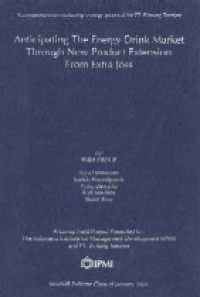
PT. Nestle ASEAN Indonesia: a strategic evaluation within Nestle AIJV frame work
| Gmd : Text
| Availability :
| 00000008621 | 147 | (GFP) | Available - Ada |
The ever changing external forces, including the shifting trend in the world economy from economic bloc to regional economic cooperation with: its preferential trading arrangements and further towards regional (free) trade agreements, creates an evolution among multinationals. As interdependency between nations increases so does the tendency of multinationals to move from decentralized into network-based structures.
ASEAN :Industrial Joint Venture was one of the schemes in the ASEAN economic cooperation which facilitates the network based structure. For Nestle with its traditionally decentralized structure, the scheme has given opportunities
to develop competitive advantage in interdependent national markets in one of the fastest growing regions within Nestle group. However the outcome from the joint venture projects in each participating country is vary. The success of a project is ultimately determined by market demand for the products. There is a tendency that for products already existed before the project, the AIJV scheme has increased market penetration whilst for new product category such as Soya Powder it still calls for relentless effort to create the market.
This paper emphasizes the analysis on the Nestle AIJV project in Indonesia. After four years of its implementation, the production capacity utilization of the Nestle AIJV factory in Indonesia has not reached the economic scale of 85%. In view of the market situation both local and export, and changes in the economic environment including the need for a restructuring in Nestle AIJV set ups with the upcoming implementation of AFT A, an evaluation of business strategy is necessary despite the Nestle' s long term investment horizon. The analysis in this paper is expected to answer the following questions:
1. Should the soya powder production in Nestle Asean Indonesia continue?
2. Should soya powder production center in ASEAN region be moved to Philippines as this market contributes over 90% of sales volume?
3. Should Nestle use the spare capacity of Indonesian ATJV factory to produce other product! which have better market demand while still producing soya to fulfill existing requirements?
Research Location: PT. Nestle ASEAN Indonesia
Supervisor: Dr. Antarikso Abdulrahman
Accepted on 1996
For IPMI Internal -- Read at Library Only.
| Series Title |
-
|
|---|---|
| Call Number |
147
|
| Publisher Place | Jakarta |
| Collation |
22p.: tabs., figs., exhibits; 27 cm.
|
| Language |
English
|
| ISBN/ISSN |
-
|
| Classification |
-
|
| Media Type |
-
|
|---|---|
| Carrier Type |
-
|
| Edition |
-
|
| Subject(s) | |
| Specific Info |
-
|
| Statement |
-
|
| Content Type |
-
|
No other version available







